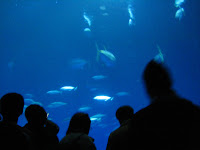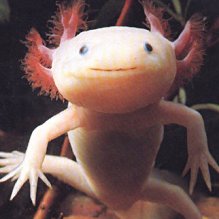
Dan sends us yet another gem. The aptly-named Lumpfish or Lumpsucker. While it looks like a distant cousin of Jabba the Hut, the lumpfish is no fictitious creature. It is a a small, slow-moving fish native to cold Arctic, North Atlantic and North Pacific Oceans. In Denmark and other Scandinavian countries Lumpfish roe are actually eaten as an inexpensive alternative to pricey, luxury caviar.
But Lumpfish are so much more than cheap caviar for hungry Danes. In general the Lumpfish is small, except for the Smooth Lumpfish that can grow up to 20 inches. The Lumpfish generally hangs out on the bottom of the ocean as its weight- to- length ratio is so disproportionate (i.e. small bodies, a lot of weight), they cannot swim very fast or far. In order to camouflage on the ocean floor, they are usually beige or grey in color.
Perhaps one of the most interesting facts about the Lumpfish is the male's devotion to the eggs before they hatch. While the male waits for the eggs to hatch, he fasts so that he can stay close to the eggs. The male also fans the egg mass constantly with his lumpy fin. (The female has since moved on.) When at last the eggs hatch, the male is so thin and exhausted he cannot continue on with the babies and they swim off on their own. This story of male devotion rivals that of the Empire Penguins. Move over March of the Penguins!
(Finally, I should also mention that in my research I learned the Lumpfish is not only a rather ungainly, fleshy-looking fish, but it is also the name of a party-rock/cover band in Connecticut. Lumpfish sets are "designed to get people off their asses early and keeping them dancing drinking and singing all night long." If anyone is ever in Connecticut, please oh please check out the Lumpfish.)




















